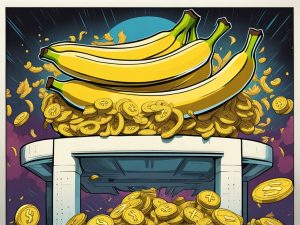Crypto Investor James Fickel Closes Ethereum Position Against Bitcoin
James Fickel, the founder of the Amaranth Foundation and a prominent crypto investor, made headlines by partially closing a multi-millionaire long Ethereum (ETH) position against Bitcoin (BTC) this year. Let’s explore the details of this significant move in the crypto market.
The Long ETH Position Strategy
Here are the key points to understand the strategy behind James Fickel’s long Ethereum position against Bitcoin:
- The position involved lending liquidity on Aave (AAVE) to borrow 3,061 Wrapped Bitcoin (wBTC).
- The $172 million wBTC loan was used to swap for 56,445 ETH over seven months, utilizing complex DeFi strategies.
- An average ETH/BTC exchange rate of 0.05424 was calculated during this period.
Partial Closing of the Position
Despite the initial success of the strategy, James Fickel recently exchanged 10,000 ETH for 426 wBTC, resulting in a partial closure of the position with a 21% loss. This move raised questions about Fickel’s investment conviction and market outlook.
Who is James Fickel?
James Fickel, a renowned crypto investor and longevity researcher, had a net worth of over $446 million in April 2024, making him the world’s fifth-richest cryptocurrency investor. His portfolio includes a substantial amount of AETHWSTETH and AETHWETH, along with other cryptocurrencies.
Investment Conviction and Market Dynamics
With a strong belief in Ethereum’s potential to outperform Bitcoin, James Fickel’s recent trading activity has raised speculation about his market outlook. However, a recent comment on the wBTC operations partnership between BitGo and Justin Sun suggests a strategic risk management approach rather than a wavering conviction in Ethereum.
Conclusion
In the ever-evolving and unpredictable cryptocurrency market, decisions like James Fickel’s position closure highlight the importance of constant risk assessment and adaptive strategies. The market awaits further developments to gain insights into Fickel’s investment approach and market sentiment.





 By
By
 By
By

 By
By

 By
By